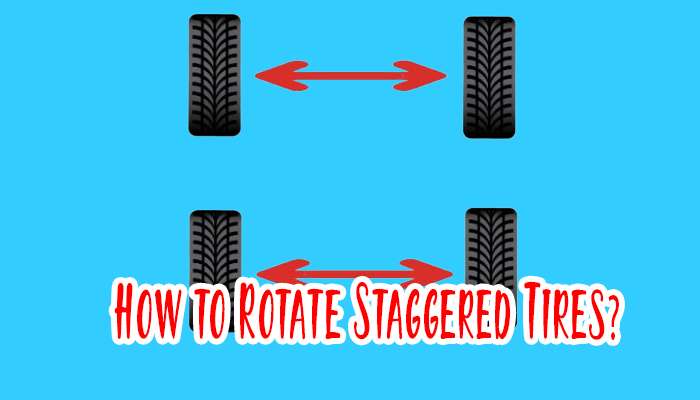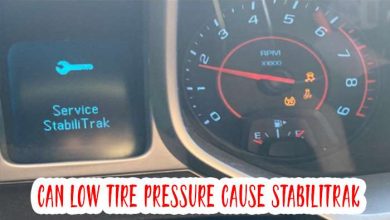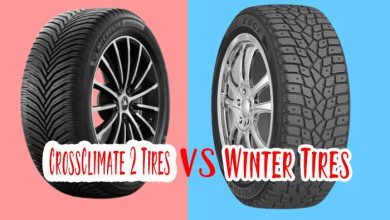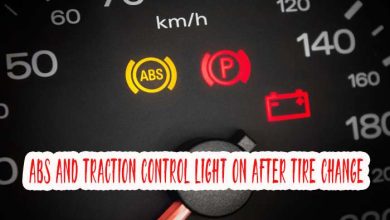How to Rotate Staggered Tires: A Tire Expert’s Guide
Are you baffled by the idea of rotating staggered tires? Fret not; I’m here to help you demystify this essential tire maintenance task.
As a tire expert with an in-depth knowledge of tire configurations and the inner workings of tires and rims, I’ll guide you through the process step by step. This blog post is designed to be informative, easy to understand, and a touch humorous. So, let’s roll!
Types of Tire Configurations
Understanding tire configurations is the first step in comprehending the importance of staggered tire rotation. Here are some common tire configurations you might encounter:

1. Staggered Tires
Staggered tires have different-sized tires on the front and rear axles. Typically, the rear tires are wider than the front ones. This configuration is often seen in high-performance sports cars and enhances traction and handling.
Related Post:
Is 50 PSI Too Much for Your Tires?
Screw In Tire But No Leak
2. Symmetric Tires
Symmetric tires are identical on all four wheels. They can be rotated in various patterns to promote even wear, making them a popular choice for many vehicles.
3. Asymmetric Tires
Asymmetric tires have different tread patterns on the inner and outer halves of the tire. This design enhances both dry and wet performance. You can rotate them in a specific pattern to ensure even wear.
4. Directional Tires
Directional tires have a tread pattern designed to rotate in only one direction. These tires should be installed to ensure the correct direction, and that rotation is limited from front to back.
Frequency of Staggered Tire Rotation
Now that you understand the different types of tire configurations let’s discuss how often you should rotate staggered tires. Proper rotation extends the lifespan of your tires and ensures even wear.
Rotating staggered tires every 6,000 to 8,000 miles or at least once a year is recommended. However, checking your vehicle’s manual for manufacturer-specific recommendations is essential, as they may vary.
How to Rotate Staggered Tires?
Now, the moment you’ve been waiting for the step-by-step guide on rotating staggered tires at home. Follow these simple instructions to ensure your tires wear evenly and your vehicle performs optimally:
Step 1: Gather Your Tools
To rotate your staggered tires, you’ll need a few tools: a car jack, jack stands, a lug wrench, and a torque wrench. Safety is paramount, so ensure your vehicle is on a level surface and working in a safe environment.
Step 2: Identify Front and Rear Tires
Before jacking up your vehicle, determine your front and rear tires. The front tires are typically smaller in staggered configurations.
Step 3: Jack up the Vehicle
Use the car jack to lift one end of the vehicle off the ground. Ensure it’s secure and stable by using jack stands.

Step 4: Remove the Wheels
Use the lug wrench to remove the wheels with your vehicle securely raised. Store the lug nuts in a safe place.
Step 5: Cross Rotation
For staggered tires, the most common rotation pattern is the cross pattern. This involves moving the front driver’s side tire to the rear passenger’s side and vice versa. Likewise, the front passenger’s side tire goes to the rear driver’s side. This pattern ensures even wear on your tires.
Step 6: Torque the Lug Nuts
Once you’ve mounted the tires in their new positions, use a torque wrench to tighten the lug nuts to the manufacturer’s recommended specifications. This ensures they are secure and safe.
Step 7: Lower the Vehicle
Carefully lower your vehicle to the ground using the car jack and remove the jack stands.
Step 8: Double-Check Lug Nut Tightness
Before hitting the road, double-check the lug nuts’ tightness to ensure your wheels are properly secured.
Congratulations! You’ve successfully rotated your staggered tires and ensured even wear, prolonging their lifespan and enhancing your vehicle’s performance.
Frequently Asked Questions
What is the cost of a professional tire rotation?
The cost of professional tire rotation can vary depending on your location and the service provider. On average, it can range from $20 to $50. Remember that the investment is worthwhile because it ensures even tire wear, which can save you money in the long run.
Can I rotate staggered tires at home without professional help?
Yes, you can rotate staggered tires at home if you have the necessary tools and follow safety precautions. Our step-by-step guide can help you through the process. Just be sure to take your time and prioritize safety.
How often should I balance my staggered tires?
Balancing your staggered tires is essential to prevent vibrations and uneven wear. It’s recommended to balance them whenever you rotate your tires, which is typically every 6,000 to 8,000 miles or once a year.
What are the signs of misaligned staggered tires?
Misaligned staggered tires can exhibit symptoms such as uneven wear, steering pulling to one side, vibrations, or a crooked steering wheel when driving straight. If you notice any of these signs, it’s crucial to have your tires checked and aligned as soon as possible.
Do you need to rotate staggered wheels?
Rotating staggered wheels is highly recommended to ensure even wear and prolong tire life. It’s an essential part of tire maintenance, especially for vehicles with staggered tire configurations.
Conclusion
Rotating staggered tires is a simple yet vital aspect of tire maintenance that can save you money in the long run and improve your vehicle’s performance.
Understanding the different tire configurations and following the correct rotation patterns ensures your tires wear evenly, providing a safer and smoother driving experience. So, don’t delay; it’s time to act and give your staggered tires the care they deserve.
Reference Link
https://www.fitmentindustries.com/staggered
Glossary
- Staggered Tires: Tires with different sizes or tread patterns on the front and rear axles.
- Symmetric Tires: Tires that are identical on all four wheels.
- Asymmetric Tires: Tires with different tread patterns on the inner and outer halves.
- Directional Tires: Tires with a tread pattern designed to rotate in only one direction.




